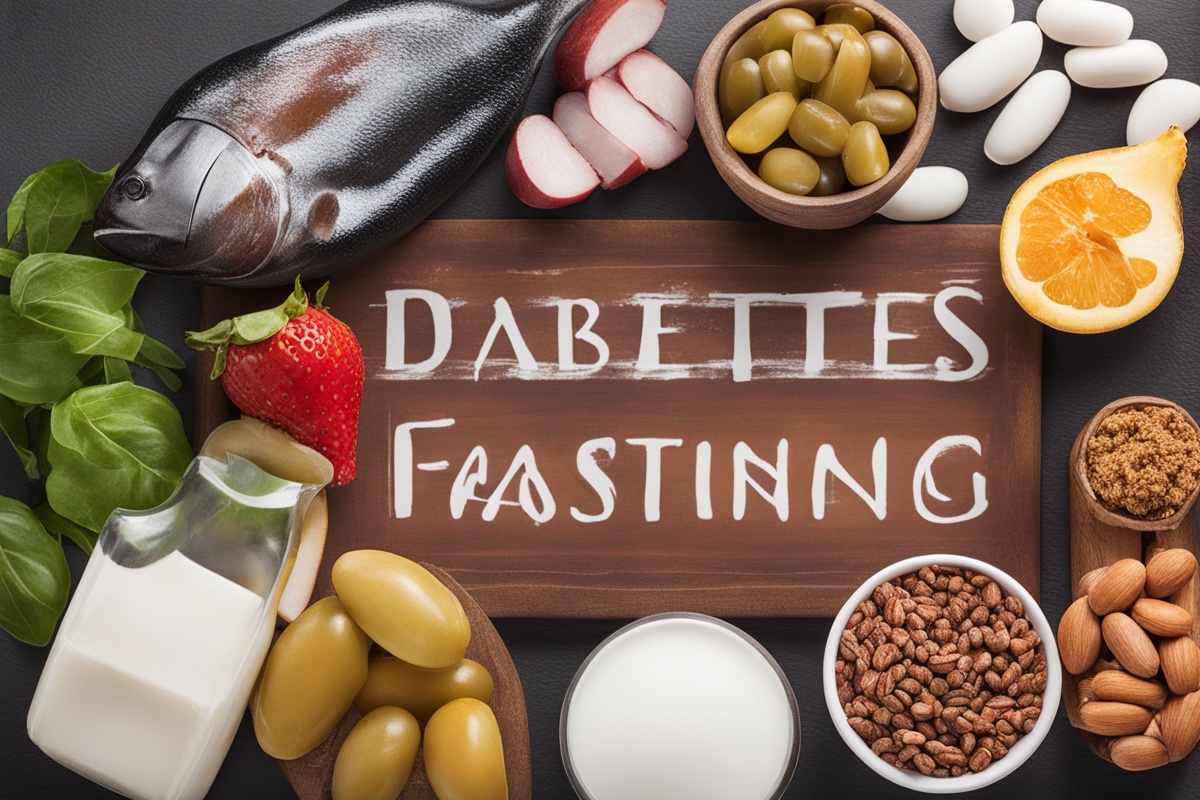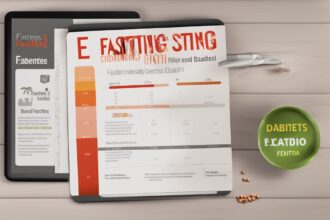Hey there, if you’re navigating the complex world of diabetes management, you’ve likely heard about the importance of controlling your fasting blood sugar levels. Whether you’re living with Type 1, Type 2, or prediabetes, keeping those numbers in check can be a game-changer for your health. But how do you do it effectively, especially when fasting—whether for religious, cultural, or health reasons—comes into play? In this comprehensive guide, we’re diving deep into diabetes management with a special focus on fasting blood sugar. I’ll share practical tips, science-backed insights, and strategies to help you maintain stable glucose levels, even when you’re abstaining from food. Let’s break it down together and make managing diabetes feel a little less daunting!
What Is Fasting Blood Sugar and Why Does It Matter?
Let’s start with the basics. Fasting blood sugar, often abbreviated as FBS, refers to the level of glucose in your blood after you haven’t eaten for at least 8 hours. It’s a critical marker for diagnosing and managing diabetes because it reflects how well your body regulates glucose without the influence of recent meals. According to the American Diabetes Association, a normal fasting blood sugar level for non-diabetics is between 70 and 99 mg/dL. For those with diabetes, the target range might be slightly higher, often 80–130 mg/dL, depending on individual health goals (ADA, 2023).
Why does this matter? High fasting blood glucose can indicate insulin resistance or poor diabetes control, increasing the risk of complications like heart disease, kidney damage, and nerve issues (Nathan et al., 2009). On the flip side, consistently low levels during fasting can signal hypoglycemia, which is equally dangerous. Understanding and managing your fasting blood glucose is like having a window into your metabolic health—it helps you and your healthcare team make informed decisions.
The Role of Fasting in Diabetes Management
fasting, whether intermittent fasting for weight loss or religious fasting like during Ramadan, can be a double-edged sword for diabetes management. On one hand, studies suggest that intermittent fasting may improve insulin sensitivity and help lower blood sugar levels over time (Halberg et al., 2005). On the other hand, skipping meals or going long periods without food can lead to dangerous spikes or drops in fasting blood sugar if not managed properly. This is especially true for those on insulin or certain medications like sulfonylureas, which can increase hypoglycemia risk during fasting (Salti et al., 2004).
If you’re considering fasting as part of your lifestyle, it’s crucial to consult your doctor or a certified diabetes educator first. They can help you adjust your medication schedule, monitor your blood glucose levels, and plan nutrient-dense meals for non-fasting hours. Fasting isn’t a one-size-fits-all solution, but with the right approach, it can be a powerful tool for managing diabetes and stabilizing fasting blood glucose.
Practical Tips to Control Fasting Blood Sugar
Now that we’ve covered the ‘why,’ let’s get into the ‘how.’ Controlling your fasting blood sugar levels doesn’t have to be complicated, but it does require consistency and a bit of planning. Here are some actionable tips I’ve gathered from both personal stories and expert recommendations to help you keep those numbers in a healthy range.
- Monitor Regularly: Invest in a reliable glucometer and check your fasting blood glucose first thing in the morning before eating or drinking anything (except water). Tracking trends over time can help you spot patterns and adjust your routine.
- Eat Balanced Meals: Focus on low-glycemic foods like whole grains, lean proteins, and healthy fats during non-fasting hours. These foods help prevent sharp spikes in blood sugar that can carry over to fasting periods.
- Stay Hydrated: Dehydration can cause blood sugar to rise, so drink plenty of water, especially if you’re fasting for long stretches. Aim for at least 8 cups a day unless advised otherwise by your doctor.
- Time Your Medications: If you’re on diabetes meds or insulin, work with your healthcare provider to adjust doses around fasting schedules to avoid lows or highs.
Lifestyle Changes to Support Healthy Fasting Blood Glucose
Beyond diet and monitoring, your overall lifestyle plays a huge role in managing fasting blood sugar control. Small, sustainable changes can make a big difference in how your body handles glucose, whether you’re fasting or not. Let’s explore a few key areas to focus on.
- Get Moving: Regular physical activity, like a 30-minute walk after meals, can improve insulin sensitivity and lower blood sugar levels over time (Colberg et al., 2016).
- Prioritize Sleep: Poor sleep can mess with your hormones, including insulin, leading to higher fasting glucose. Aim for 7–9 hours of quality rest each night.
- Manage Stress: Chronic stress triggers cortisol release, which can raise blood sugar. Try mindfulness practices like meditation or deep breathing to keep stress in check.
- Limit Alcohol: Alcohol can interfere with blood sugar regulation, especially during fasting. If you drink, do so in moderation and never on an empty stomach.
- Quit Smoking: Smoking worsens insulin resistance and complicates diabetes management. Seek support to quit if this is a challenge for you.
Navigating Fasting Challenges with Diabetes
Fasting, whether for health or spiritual reasons, can throw some curveballs when you’re managing diabetes. I’ve spoken to many folks who’ve struggled with feeling lightheaded, irritable, or just plain worried about their fasting blood sugar levels during these times. The key is preparation and knowing your limits. For instance, during Ramadan, the International Diabetes Federation recommends that people with diabetes at high risk of complications (like frequent hypoglycemia) should avoid fasting altogether (IDF, 2021). If you do fast, break it with a balanced meal—think dates for quick energy, followed by protein and fiber-rich foods to stabilize blood glucose.
Another challenge is the temptation to overeat after fasting, which can cause a rapid spike in blood sugar. I get it—after hours without food, it’s easy to reach for sugary treats or carb-heavy meals. Instead, plan ahead with portion-controlled, nutrient-dense options. And remember, if you feel unwell or your blood sugar readings are off during fasting, it’s okay to stop. Your health comes first.
When to Seek Professional Help
While these tips can empower you to take charge of your fasting blood glucose, there are times when professional guidance is non-negotiable. If you notice persistent high fasting blood sugar readings (above 130 mg/dL) despite lifestyle changes, or if you experience symptoms like excessive thirst, frequent urination, or unexplained fatigue, it’s time to check in with your doctor. Similarly, frequent lows (below 70 mg/dL) during fasting periods warrant immediate attention to adjust your treatment plan.
Your healthcare team might recommend a continuous glucose monitor (CGM) for real-time tracking, especially if fasting is a regular part of your routine. They can also help tailor a diabetes management plan that aligns with your fasting goals while keeping your blood sugar stable. Don’t hesitate to ask questions—managing diabetes is a team effort, and you deserve all the support you can get.
As we wrap up, remember that mastering fasting blood sugar control is a journey, not a sprint. Diabetes management isn’t about perfection; it’s about progress. By understanding your fasting blood glucose levels, making informed choices about fasting, and adopting sustainable lifestyle habits, you’re setting yourself up for long-term health. Keep experimenting with what works for you, stay in touch with your healthcare team, and don’t be too hard on yourself if things don’t go as planned. You’ve got this! If you found this guide helpful, share it with someone who might benefit, and let’s keep the conversation going about managing diabetes with confidence.
References
- American Diabetes Association. (2023). Standards of medical care in diabetes—2023. Diabetes Care, 46(Suppl 1), S1–S280.
- Colberg, S. R., Sigal, R. J., Yardley, J. E., et al. (2016). Physical activity/exercise and diabetes: A position statement of the American Diabetes Association. Diabetes Care, 39(11), 2065–2079.
- Halberg, N., Henriksen, M., Söderhamn, N., et al. (2005). Effect of intermittent fasting and refeeding on insulin action in healthy men. Journal of Applied Physiology, 99(6), 2128–2136.
- International Diabetes Federation. (2021). Diabetes and Ramadan: Practical guidelines 2021. IDF Guidelines.
- Nathan, D. M., Buse, J. B., Davidson, M. B., et al. (2009). Medical management of hyperglycemia in type 2 diabetes: A consensus algorithm for the initiation and adjustment of therapy. Diabetes Care, 32(1), 193–203.
- Salti, I., Bénard, E., Detournay, B., et al. (2004). A population-based study of diabetes and its characteristics during the fasting month of Ramadan in 13 countries: Results of the epidemiology of diabetes and Ramadan 1422/2001 (EPIDIAR) study. Diabetes Care, 27(10), 2306–2311.






